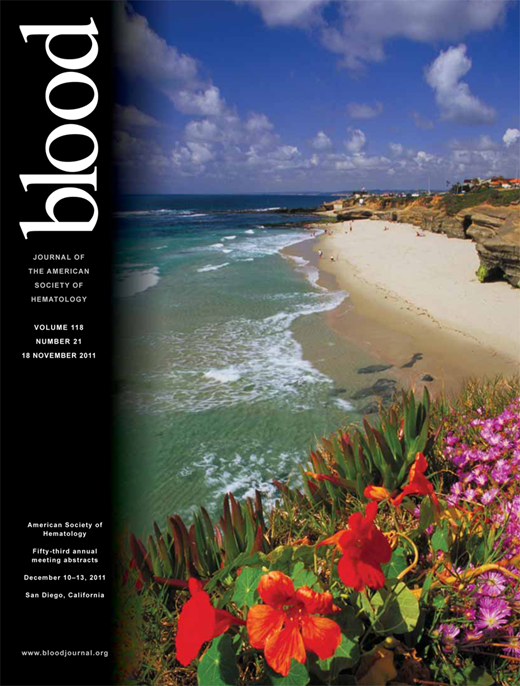Abstract
Abstract 838
Allogeneic hematopoietic cell transplantation (HCT) can cure bone marrow failure in persons with Fanconi anemia (FA). However, results in those with pretransplant cytogenetic abnormalities (CA), myelodysplastic syndrome (MDS) or acute leukemia (AL) are less favorable, although only limited data are available. Thus, the current study was designed to use data from the Center for International Blood and Marrow Transplant Research (CIBMTR) to evaluate the outcomes of these patients after HCT.
Patients and Methods: This is a retrospective analysis of 113 FA patients with CA (n=54), MDS (n=45), or AL (n=14) before allogeneic HCT, and who were reported to CIBMTR from 1985 to 2007 by 46 centers worldwide. Overall survival (OS) probability was estimated using the Kaplan-Meier method. Engraftment and acute and chronic graft-vs-host-disease (GvHD) were determined using cumulative incidence estimates to accommodate competing risks. Univariate analyses were conducted to evaluate the prognostic impact of key variables. The small sample size precluded multivariate analysis. Fifty four patients had CA including complex abnormalities (n=18), chromosome (Chr) 1 abnormalities (n=8), chr 3 abnormalities (n=1), chr 5 abnormalities (n=3), chr 7 abnormalities (n=4) and other non-complex abnormalities (n=20). Pretransplant conditioning regimens were radiation-based in 67 patients and chemotherapy-based in 46 patients. The donor source was bone marrow/peripheral blood (matched related, n=82; unrelated, n=16), or cord blood (related, n=2; unrelated, n=13).
Absolute neutrophil count (ANC) recovery occurred in 78% and 85% of patients, at day 28 and day 100, respectively. At day 100, the cumulative incidences of acute GvHD grade II–IV and III–IV were 26% (95% confidence intervals [CI] 19–35), and 12% (95% CI 7–19), respectively. Chronic GvHD cumulative incidences were 20%, 23%, and 23% at 1, 3, and 5 years, respectively. Primary graft-failure occurred in 18 patients. Cumulative incidence of secondary graft-failure at 2 years was 9% (95% CI 4–15). Survival probabilities were 64%, 58%, and 55% at 1, 3, and 5 years, respectively. Exclusion of subjects with chr 1 abnormalities did not alter the results (log-rank P value=.81). In univariate analysis, among the entire cohort, none of the following variables affected survival: use of fludarabine or radiation in the conditioning regimen, the presence of AL/MDS as compared to only CA, or year of transplant. Age at transplant was the only variable significantly correlated with 5-year OS (≤ 14 years vs. > 14 years, 69% vs. 39%, respectively; P =0.001). When analysis was restricted to recipients of related donor HCT (n=82), age again correlated with 5-year survival (≤ 14 years vs. > 14 years, 78% vs. 34%, respectively; P <.001); additionally, patients with CA pretransplant had better survival than those with MDS or AL (5-year OS: 67% vs. 43%, P =0.03).
Our analysis indicates that persons with FA and pretransplant CA, MDS, or AL have a reasonable survival with HCT. The analysis also suggests that survival may be better in younger persons and in those with only CA pretransplant. No firm conclusions can be drawn from this study regarding the impact of the conditioning regimens; the current data, however, suggest that radiation-based conditioning regimens are not associated with a survival advantage as has been suggested by previously published data.
No relevant conflicts of interest to declare.
Author notes
Asterisk with author names denotes non-ASH members.

